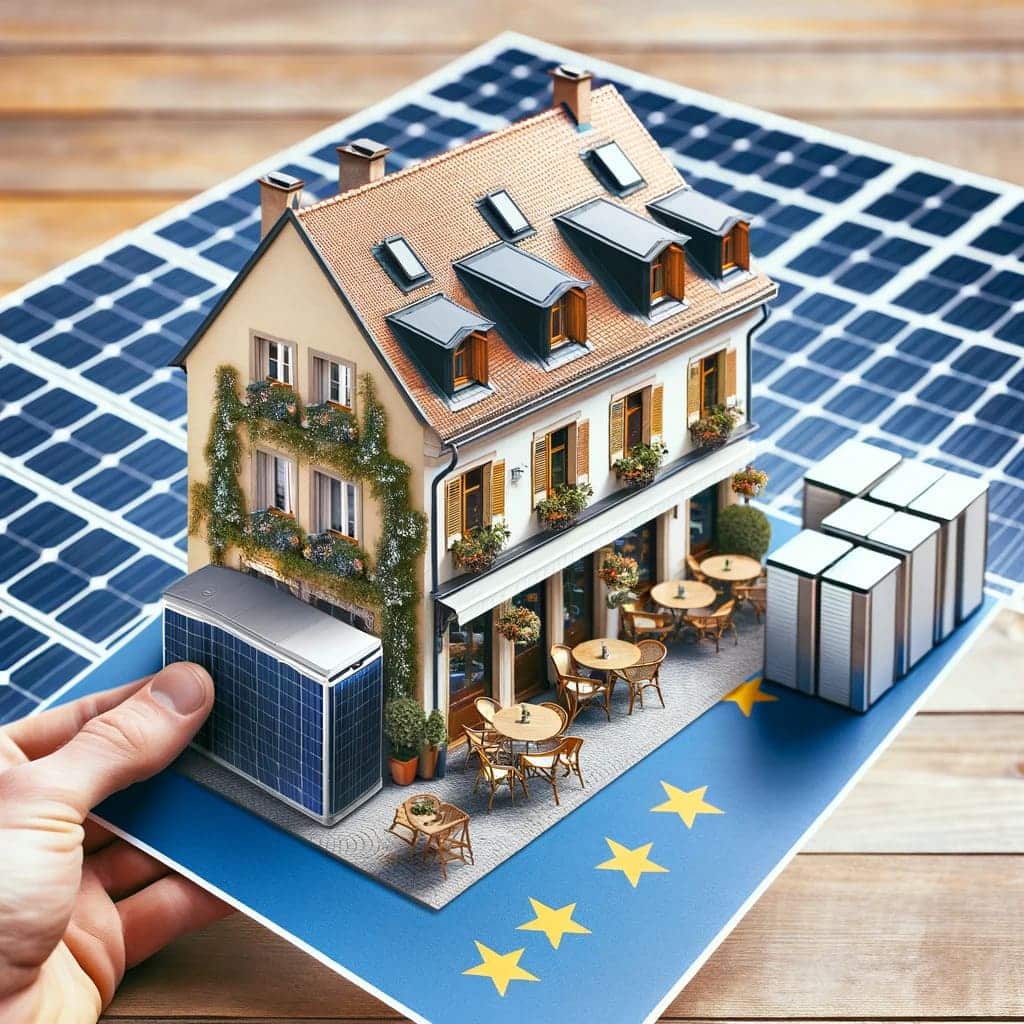Introduction to Home Energy Storage in Europe
Home energy storage systems (HESS) in Europe have seen a significant surge in adoption, reflecting a growing awareness and need for sustainable energy solutions. The landscape varies across different European countries, each demonstrating unique trends and adoption rates.

Germany: A Leader in Energy Storage
Germany stands at the forefront of HESS adoption in Europe. The combination of high electricity rates, generous government incentives, and a strong push for renewable energy has led to widespread use of home energy storage solutions.
United Kingdom: Rapid Growth Despite Challenges
In the UK, the market for HESS is growing rapidly, despite the challenges posed by a less favorable regulatory environment compared to Germany. The decreasing cost of solar panels and storage systems is a key driver of this growth.
Spain: Emerging Market with High Potential
Spain is an emerging market for home energy storage, spurred by its abundant sunshine and recent changes in legislation that favor solar energy use and storage.
Nordic Countries: Focus on Sustainability
Nordic countries, with their focus on sustainability, are gradually adopting HESS. The integration of these systems with hydropower and wind energy is particularly notable in this region.
In conclusion, the home energy storage market in Europe is diverse and dynamic, driven by unique factors in each country. The overall trend, however, is towards a more sustainable and efficient energy future.
Understanding Electricity Pricing in Europe
Electricity pricing in Europe varies considerably from country to country, influenced by factors like energy sources, government policies, and market dynamics. Let’s delve into the pricing mechanisms of some key European countries:
Germany
Uses a tiered electricity pricing model with higher prices during peak daytime hours and lower prices at night. The Renewable Energy Act significantly influences pricing.
Spain
Has a dynamic pricing model linked to the wholesale market, with hourly changes based on demand. Prices are higher in late afternoon and early evening and lower at night.
United Kingdom
Employs a time-of-use pricing model. Higher rates during peak hours (4 pm to 7 pm) and lower rates during off-peak hours. Economy 7 and Economy 10 tariffs offer lower rates for electricity used during off-peak windows.
France
Primarily uses a flat-rate pricing model but also offers time-of-use options with higher prices during peak hours and cheaper rates during off-peak periods.
Netherlands
A combination of flat-rate and time-of-use pricing, with higher prices during the day and lower prices at night and on weekends.
For more detailed information on European electricity pricing, Electricity Pricing in Europe – Wikipedia offers an in-depth look at how electricity markets operate in various European countries.
Understanding these pricing structures is crucial for European consumers, especially those considering the adoption of home energy storage systems to mitigate the impact of peak tariffs.
The Role of Home Energy Storage in Reducing Costs
Home energy storage systems (HESS) are increasingly recognized as a crucial tool in reducing electricity costs, particularly by managing peak demand in households.
Managing Peak Demand
During peak hours, when electricity prices are at their highest due to increased demand, HESS can provide power, reducing reliance on the grid. This shift not only eases the burden on electricity grids but also lowers the electricity bills for homeowners.
Cost-Effective Energy Use
By storing energy during off-peak hours when rates are lower and using it during peak times, HESS enables households to utilize electricity more cost-effectively. This is especially beneficial in countries with time-of-use tariffs, where electricity prices fluctuate throughout the day.
Long-Term Savings
In the long term, the use of HESS not only provides immediate reductions in electricity bills but also acts as a hedge against future increases in energy costs. As electricity prices continue to rise, the savings potential of HESS becomes even more significant.
Home energy storage systems thus play a pivotal role in reducing household energy costs, offering a sustainable and economically viable solution for managing electricity consumption.
Case Studies: Success Stories in Europe
Here are real-life examples of European households and businesses that have significantly cut down on their electricity expenses using home energy storage systems:
A Modern Household in Germany
This family in a suburban area of Berlin installed a high-capacity home energy storage system. The system stores solar energy generated during the day for use during peak hours, reducing their reliance on grid electricity and cutting costs significantly.

Small Business in Spain
A café in Barcelona integrated a solar-plus-storage system. It helps manage energy use more efficiently, especially during the tourist season, and reduces electricity bills by using stored solar energy during peak price periods.

Rural Home in France
A family living in the French countryside has embraced sustainable living by installing a solar energy storage system. This system provides them with energy independence and reduces their overall energy costs.

Urban Apartment in Italy
Residents of a modern apartment complex in Rome have installed individual energy storage units. These units help in reducing electricity costs by leveraging solar energy, particularly beneficial in urban settings where energy demand is high.

These case studies demonstrate the versatility and effectiveness of home energy storage systems in various European settings, proving their value in reducing electricity costs and promoting sustainable living.
The Future of Home Energy Storage in Europe
The landscape of home energy storage in Europe is poised for significant growth and development in the coming years. Here’s a glimpse into the future trends and predictions:
Increased Adoption Driven by Sustainability Goals
Europe is at the forefront of sustainable energy practices. With increasing awareness and government incentives, more European households are expected to adopt home energy storage solutions.
Integration with Renewable Energy Sources
The integration of home energy storage with renewable sources like solar and wind is predicted to rise, aiding the transition to a more sustainable and independent energy model.
Technological Advancements and Cost Reductions
Technological innovations are expected to make energy storage systems more efficient and affordable, accelerating their adoption in European homes.
Energy Independence and Grid Stability
Home energy storage is seen as a key solution for enhancing grid stability and providing energy independence, especially in regions with high renewable energy penetration.
Smartrade's Role in Shaping the Future
As a leading provider, Smartrade is set to play a significant role in this evolving market. We offer innovative and customized home energy storage solutions that align with the emerging needs of European households.
For those interested in exploring home energy storage options or seeking tailored solutions, Smartrade is a go-to resource. We are committed to empowering homes with sustainable, efficient, and cost-effective energy storage systems.
Make appointment
Get in Touch
Contact us to get a free quote and more expertise about portable power stations. Your project will meet the right solution with Smartrade.
Get in touch with us! Click here
Customize your Power Station with Easy
Let's start project with Our company & Booking Now !
At Smartrade, We turn complex Into Simple! Follow the following 3 steps to start today!
- Tell Us What You Need
- Get Solution & Quote
- Approve for Mass Production
